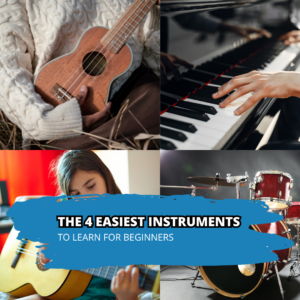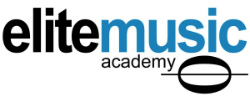The 4 Easiest Instruments to Learn for Beginners

Learning a musical instrument can be a rewarding and enjoyable experience, especially when starting with one of the easiest instruments to learn. For beginners, choosing an instrument that is straightforward to pick up can make the learning process more engaging and less frustrating. By focusing on these accessible instruments, new musicians can quickly build their confidence and develop a strong foundation in music.
Ukulele
The ukulele is a small, guitar-like instrument that originated in Hawaii. It typically has four nylon strings and comes in various sizes, including soprano, concert, tenor, and baritone. Its compact size and light weight make it highly portable and ideal for players of all ages. The ukulele produces a cheerful and bright sound, which has contributed to its popularity in various music genres, from folk to pop.
Why It’s Easy to Learn
One of the main reasons the ukulele is among the easiest instruments to learn is its simplicity. With only four strings, beginners can quickly master basic chords and strumming patterns. The nylon strings are gentle on the fingers, reducing discomfort during practice. The ukulele’s chord shapes are also relatively easy to form, and many popular songs can be played with just a few chords. Additionally, there are numerous online resources and tutorials available for new ukulele players.
Tips for Getting Started
To start learning the ukulele, beginners should invest in a quality instrument that stays in tune. Learning a few basic chords, such as C, G, F, and Am, can provide a foundation for playing many songs. Practicing strumming patterns and finger placement is crucial for developing muscle memory. Joining a ukulele group or taking lessons can provide additional support and motivation. Consistent practice, even for just a few minutes a day, will help new players improve steadily.
Keyboard/Piano
The keyboard or piano is a versatile instrument that is foundational to many genres of music. It features a series of keys that produce different pitches when pressed. The layout of the keyboard is linear and logical, making it easier for beginners to understand musical concepts such as scales, chords, and intervals. Keyboards can range from small, portable models to full-sized pianos.
Why It’s Easy to Learn
The keyboard is one of the easiest instruments to learn due to its straightforward design. Each key corresponds to a specific note, eliminating the need to learn complex fingerings or hand positions. Beginners can quickly learn to play melodies and simple chords. The visual layout of the keys helps learners understand musical theory more easily. Additionally, many keyboards come with built-in learning tools, such as metronomes and pre-programmed songs, which aid in practice.
Tips for Getting Started
Starting with a basic keyboard or digital piano with weighted keys can provide a good foundation. Learning to read sheet music and understanding basic music theory will enhance the learning experience. Practicing scales, arpeggios, and simple songs regularly helps build finger strength and dexterity. Using online tutorials, attending lessons and apps designed for keyboard learning can offer additional support. Setting achievable goals and maintaining a consistent practice schedule will lead to steady progress.
Guitar
The guitar is a widely popular string instrument that is used in various music genres, from rock to classical. It typically has six strings and can be played using a pick or fingers. Guitars come in different types, including acoustic, electric, and classical. The instrument’s versatility and the vast availability of learning resources make it a favorite among beginners.
Why It’s Easy to Learn
The guitar is considered one of the easiest instruments to learn because it allows for immediate musical expression. Beginners can quickly learn basic chords and strumming patterns, enabling them to play many popular songs early in their learning journey. The availability of numerous online tutorials, chord charts, and instructional videos makes self-learning accessible. The guitar’s portability and the ability to play solo or in a group add to its appeal for new musicians.
Tips for Getting Started
Beginners should start with a quality guitar that is comfortable to play. Learning basic chords, such as G, C, D, and Em, is essential for playing many songs. Practicing chord transitions and strumming techniques will help build a solid foundation. Using a metronome can assist with timing and rhythm. Joining a guitar class or finding a tutor can provide personalized instruction and motivation. Regular practice, even in short sessions, will lead to consistent improvement.
Drums
Drums are a key component of many musical styles, providing rhythm and tempo. A standard drum set includes a bass drum, snare drum, toms, hi-hat, and cymbals. Drumming involves using both hands and feet to create various rhythmic patterns. The physicality of playing the drums makes it an engaging and energetic activity.
Why It’s Easy to Learn
Drums are among the easiest instruments to learn because they do not require knowledge of musical notes or scales. Beginners can start by learning basic beats and rhythms, which can be applied to many songs. The physical nature of drumming helps develop coordination and timing quickly. With practice, new drummers can play along with their favorite songs and join bands or ensembles. The abundance of online tutorials makes learning accessible and fun.
Tips for Getting Started
Starting with a basic drum kit or a practice pad can help beginners learn fundamental techniques. Learning to hold drumsticks properly and practicing basic beats, such as the rock beat, is a good starting point. Using a metronome will help with timing and consistency. Watching instructional videos and taking lessons from experienced drummers can provide valuable guidance. Consistent practice and playing along with music tracks will enhance skills and enjoyment.
We Offer Lessons for These Instruments!
We offer comprehensive lessons for all the easiest instruments to learn, including the ukulele, piano, guitar, and drums. Our experienced instructors provide personalized guidance to help beginners build a strong foundation and develop their musical skills. Whether you are looking to learn an instrument for personal enjoyment or to pursue a more serious musical path, our flexible and supportive learning environment caters to all needs. Join us to start your musical journey. No prior experience is necessary, and we welcome students of all ages and skill levels. Visit us in Toronto and discover the joy of making music today. Check out reviews from our community here at the academy!
FAQs
1. What makes an instrument one of the easiest instruments to learn?
The easiest instruments to learn typically have simple playing techniques, minimal physical demands, and straightforward learning curves, making them accessible for beginners.
2. How much should I practice daily to master one of the easiest instruments to learn?
The time it takes to learn varies, but with consistent practice, many beginners can play basic songs on these instruments within a few weeks, thanks to their straightforward techniques.
3. How can beginners gauge their progress and know if they are improving effectively while learning to play an instrument?
Consistent improvement in playing songs, mastering new chords, and developing smoother transitions are signs of good progress, along with positive feedback from instructors or peers.
4. Is it necessary to learn to read music in order to play beginner-friendly instruments, or are there alternative methods?
While reading music can be helpful, many beginner-friendly instruments can be picked up through tutorials and chord charts, allowing beginners to start playing without needing to read music.
5. Is joining a band or ensemble a realistic goal for beginners who start with an easier-to-learn instrument, and what benefits does it offer?
Yes, many beginners join bands or ensembles after mastering the basics, offering benefits such as improved teamwork, increased motivation, and enhanced musical skills through collaboration. Check out our group guitar classes!






